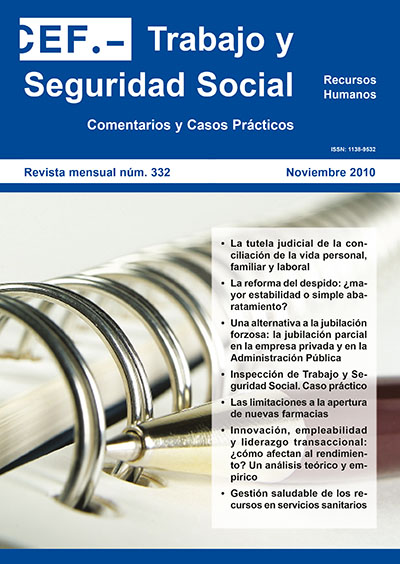Healthy management of human resources in a health and care services organization
DOI:
https://doi.org/10.51302/rtss.2010.5245Keywords:
care work, healthy organizations, work environment, burnout, impulsivity, personalityAbstract
Care work characteristics and the dynamics of management based on the concept of healthy organizations, are two widely studied and theorized aspects, but, rarely, seen in interaction as a way to enhance the quality of working life and quality of service provided in the work of people who work with people.
The demand made by the services company to our research group is an opportunity to evaluate and to intervene in health care personnel, identifying needs and proposing solutions for improvement.
Our intervention was carried out with urgent medical transport technicians and non-urgent, in two phases: a preliminary working sessions in which a battery of psychosocial tests was administered, and a second phase consisting of training sessions organized in two courses of 20 hours, tailored to the needs of participants, and in which we administered psychosocial tests of work environment, burnout, impulsivity and personality, in test-retest
Knowing and informing the results to both, workers and company, implies continuing building programs to answer the identified needs, encouraging the involvement of the worker-firm pairing, as the personal welfare of the members individually.
Downloads
References
Barrett, J. [1970]: Individual goals and organizational objectives: A study of integration mechanisms. Ann Arbor, Michigan: Center for Research on Utilization of Scientific Knowledge.
Cox, T. y Cox, S. [1992]: Occupational health: past, present and future. Work & Stress, 6, 99-102.
Cressey, P., Bolle de Bal, M. y Treu, T. [1988]: Análisis de la participación. Luxemburgo: Fundación Europea para la mejora de las condiciones de vida y trabajo.
Ferrater Mora, J. [1984]: Diccionario de filosofía. Madrid: Alianza.
Griggs, L.B. [1995]: «Valuing diversity: where from… where to?» en L.B. Griggs y L.L. Louw (eds.), Valuing diversity: new tools for a new reality, págs. 1-14, Nueva York: McGraw Hill.
Herzberg, F. [1966]: Work and the nature of man. Cleveland: World Publishing.
Husenman, R., Hatfield, J. y Miles, E. [1987]: «A new perspective on equity theory: the equity sensitivity construct». Academy of Management Review, 12, págs. 222-234.
Ivancevich, J.M. [2005]: Administración de Recursos Humanos. México, D.F.: McGraw-Hill Interamericana.
Jahoda, M. [1958]: Current concepts of positive mental health. Nueva York: Basic Books.
– [1982]: Employment and unemployment. A social-psychological analysis. Cambridge: Cambridge University Press.
Lawler, E.E. [1982]: «Increasing worker involvement to enhance organizational effectiveness», en P. Goodman and Associates (eds.), Change in Organizations, págs. 280-315, San Francisco: Jossey-Bass Publishers.
Lawler, E.E. y Mohrman, S.A. [1989]: «Tras la moda de los círculos de calidad». Harvard-Deusto Business Review, 4, págs. 15-26.
Murphy, L.R. [1999]: «Organizaciones laborales saludables: agenda de investigación». Revista de Psicología del Trabajo y de las Organizaciones, 15 (2), págs. 223-235.
Naisbit, J. [1984]: Megatrends: ten new directions transformin our lives. Nueva York: Warner.
Newell, S. [2002]: Creando organizaciones saludables. Bienestar, diversidad y ética en el trabajo. Madrid: Thomson Paraninfo.
Pfeiffer, G. J. [1987]: «Corporate health can improve if firms take organizational approach». Occupational Health & Safety, October, págs. 96-99.
Solanes, A. [2006]: «Gestión positiva de conflictos», en C. Van-Der Hofstadt y J. M. Gómez (coords.), Competencias y habilidades profesionales para universitarios, págs. 433-464, Madrid: Díaz de Santos.
Wall, T.D. y Lischeron, J.A. [1977]: Worker participation: a critique of the literature and some fresh evidence. Nueva York: McGraw-Hill.
Warr, P. [1987]: Work, unemployment and mental health. Oxford: Oxford University Press.


















